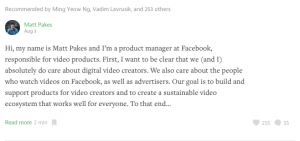— February 6, 2018

StartupStockPhotos / Pixabay
SaaStr is one of the largest gatherings of enterprise software professionals in the world. This will be my third time attending, and I’m excited to connect with other investors and meet promising founders to learn and share about the future of SaaS.
In my decade of experience investing in this space, I’ve built somewhat of a formula to predict which companies will find success. Now, more than ever, I’m looking to meet companies at SaaStr that exhibit excellence in the following key areas. I’ve come to view these attributes as indicators of success and have also seen them be sometimes overlooked by founders in their hustle to prove themselves.
TALENT ACQUISITION
So many elements of starting a company are easier than they used to be, and the barriers to entry are much lower than ever before. One thing that’s getting harder instead of easier, though? Finding, and keeping, great talent. According to the U.S. Department of Labor, startup firms gained 1.7 million jobs from March 2016 to March 2017 although, historically, it’s always been a challenge to land great developers. Now, it’s also nearly as difficult to find a top-tier digital marketer, an operations manager, you name it. Whenever I meet a company founder or CEO, a question I ask myself is: “Does this person have the ability to attract top talent?” The answer to that question can make all the difference in whether that company is a promising investment.
ONBOARDING AND IMPLEMENTATION
This is an area that hasn’t gotten its moment in the spotlight yet, and that’s a mistake. We all know that at the top of the funnel, the focus is on sales and marketing automation. I’ve said it before and I’ll say it again: I’m much more interested in the very bottom of the funnel than the top. In an analysis of the cost of customer acquisition compared to customer retention, conversation optimization experts Invesp found that increasing customer retention rates by just 5 percent can increase profits from 25 percent up to 95 percent. What’s more, existing customers are 50 percent more likely to try new products and also spend 31 percent more on average than new customers. So, my questions are always these: What best practices are you following for onboarding a customer and helping them implement your product? Who on your team is dedicated to customer success? What are you doing to ensure that your clients need you as much as you need them?
MACHINE LEARNING
Machine learning has the potential to fundamentally transform industries as wide-reaching as healthcare and cybersecurity. Phrases like “artificial intelligence” and “machine learning” are on the lips of everyone pitching a technology company these days—just like “cloud” used to be a few years ago. At SaaStr, I’ll be watching closely to see which founders are truly leveraging advanced skills to build game-changing products and which are merely taking advantage of the marketing hype to draw attention.
One of my favorite parts of investing in SaaS companies is the rapid evolution of businesses across the entire sector. Year over year, I can think of no other business type that has experienced more dynamic growth in the past decade. And looking toward the future, my bet is on companies that distinguish themselves from the pack by emphasizing talent, customer retention and true, deep technology.
I’m looking forward to meeting new people and companies at SaaStr 2018. Will you be there?
This piece was originally published on the BIP Capital blog and has been reprinted with permission.
Business & Finance Articles on Business 2 Community
(38)







